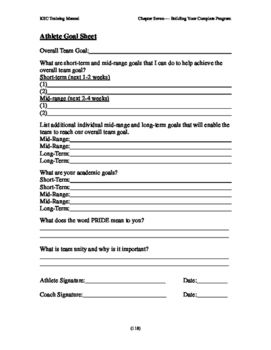Goal Setting for Strength Athletes: Strategies for Success

Setting goals is crucial for any athlete looking to succeed in their chosen field. In the world of strength athletes, whether you are a powerlifter, weightlifter, or strongman, having clear goals can provide a roadmap to success and keep you focused on your training. In this article, we will explore various strategies for goal setting that can help strength athletes reach their full potential.
1. Define Your Ultimate Objective
Before setting smaller goals, it is important for strength athletes to have a clear understanding of their ultimate objective. Whether it is to break a personal record, compete at a professional level, or win a championship, recognizing your true long-term goal will give you direction and motivation throughout your journey.
For example, if your ultimate objective is to compete at an international powerlifting event, break it down into smaller, achievable goals like qualifying for regional competitions, increasing your lifts by a certain percentage, or working on specific weaknesses.
2. Set Realistic and Measurable Goals
While it’s essential to dream big, setting realistic goals is equally important. Strength athletes must assess their current abilities, acknowledge any limitations, and set achievable targets accordingly.
A powerful technique for goal setting is to use the SMART framework:
Specific: Clearly define what you want to achieve.
Measurable: Establish measurable criteria to track progress.
Achievable: Set goals that are within your reach, considering your current abilities.
Relevant: Ensure your goals align with your long-term objectives.
Time-bound: Set a deadline for achieving each goal.
For example, instead of setting a vague goal like “lifting more weight,” a SMART goal would be “increase my deadlift by 20 pounds within three months.”
3. Break Down Goals into Short-Term and Long-Term
Long-term goals can seem overwhelming, but breaking them down into smaller, manageable short-term goals can make progress more achievable and less daunting.
As a strength athlete, consider setting daily, weekly, monthly, and yearly goals that ultimately contribute to your long-term objectives. For instance, a daily goal could be to follow a specific training program, while a monthly goal could be to increase your squat by 10 pounds.
4. Keep a Training Journal
A training journal is a powerful tool for tracking your progress, identifying patterns, and staying accountable to your goals. Record details such as sets, reps, weights, and notes on how each session went. Analyzing your journal regularly can help you identify areas of improvement and celebrate milestones along the way.
5. Embrace Both Process and Outcome Goals
When setting goals, it is essential to distinguish between process goals and outcome goals. Process goals focus on the actions and behaviors required to achieve success, while outcome goals center around the end result.
While outcome goals are important for motivation, process goals are crucial for consistent progress. For example, an outcome goal might be “winning a powerlifting competition,” while a process goal could be “following a structured and progressive training program.”
6. Seek Professional Guidance
Strength athletes can immensely benefit from seeking professional guidance, especially from experienced coaches or trainers who specialize in their chosen sport. These experts can help you set appropriate goals, design personalized training programs, and provide ongoing support and feedback.
7. Review and Adjust Goals as Needed
Goals are not set in stone. As you progress, it is important to regularly review and adjust your goals to accommodate new challenges, accomplishments, and changes in circumstances.
Reassessing and modifying your goals ensures that they remain relevant, achievable, and aligned with your evolving aspirations. Additionally, it allows you to maintain your motivation by breaking through plateaus and setting new targets.
Conclusion
Goal setting is a fundamental aspect of success for any strength athlete. By defining your ultimate objective, setting realistic and measurable goals, breaking them down into smaller milestones, keeping a training journal, embracing both process and outcome goals, seeking professional guidance, and regularly reviewing and adjusting your goals, you can maximize your potential and achieve the success you desire in the world of strength sports.